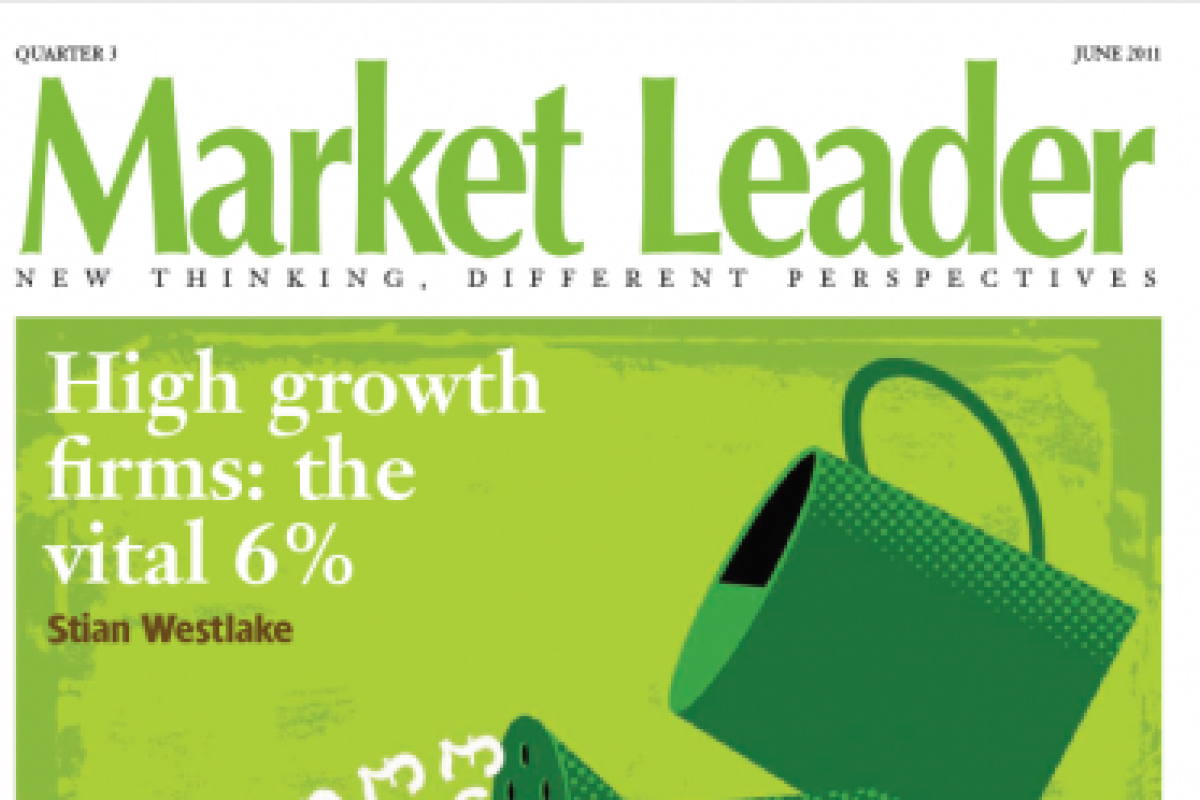Marketing and advertising are often based on the assumption that people have ‘deep’ attitudes and beliefs, that determine their choices of products and services; and that the function of marketing and advertising must therefore be attitude change. Research in behavioural economics, and social and cognitive psychology, suggests, however, that such apparent ‘mental depths’ are illusions created by our own minds. The real origins of consumer choices are often surprisingly shallow.
MAKING A DECISION When we choose a car, vote, or make a moral choice, we certainly imagine ourselves driven by deep motivations and desires. But one of the insights of modern behavioural science is that this feeling is almost entirely an illusion. Rather than consulting our inner selves, we are rather desperately attempting to figure out, on the spot, what we should do and feel. Rather than drilling down into some stable bedrock, we cook up a credible-sounding story about our behaviour. For example, suppose I ask how much TV you watch each night. I might give you options such as (a) 0-15 mins, (b) 15-30 mins, (c) 30-45 mins, (d) 45-60 mins, (e) more than 60 mins. Suppose you consult your ‘inner statistician’ and select (c). However, I might have asked you if the answer was (a) 0-1h, (b) 1-2h, (c) 2-3h, (d) 3-4h, (e) more than 4h. Your inner statistician should look deep within your experience, and select (a). But there is no inner statistician, peering into your mental depths – indeed, there are no mental depths to peer into. Instead, with either set of options, you actually think: ‘Help, I’ve no idea! I suppose I watch a bit less TV than the average person; and these options probably cover the population at large. So perhaps I’m a (b).’ And you do this both times. Even though the answers are wildly inconsistent. This phenomenon is called prospect relativity1, and perhaps it doesn’t really matter much when applying it to how much television I watch. However, the phenomenon is ubiquitous. We can be induced, by similar trickery, to favour wildly risky investments (if the others are even riskier) or stodgily safe ones; to favour fuel efficiency over performance in a new car, or the reverse; to focus on quality, or price, when in the supermarket. There is no point trying to figure out what consumers want, and providing it because we don’t know what we want ourselves. There are limits to our flexibility and confusion. As I mentioned, one way that we cook up stories about what we want is by considering what we normally do. If I usually buy quality audio equipment, I have some evidence that this matters to me so I’d better do so when next in the store. I’m like an author flicking back in my manuscript to remember a character’s hair colour; to be consistent, I have to check what I like and feel, and stick with it. Experiments on choice blindness by my collaborator Petter Johansson show this process in operation very neatly2. Johansson asks people to choose which of two faces they think is most attractive; and then by a conjuring trick, presents the person with the face they didn’t choose, saying ‘tell me why you chose that one’. The shocking things are that: (i) people don’t notice the switch; (ii) they are perfectly happy to provide an explanation for choosing face B, a few seconds after actually choosing face A. What does this mean for marketing and advertising? Don’t try to look deep inside your customers, or your employees, or yourself. Do focus on the momentby- moment processes of consumer choice – every effort counts3, and even the slightest mental or physical barrier may push the consumer towards one choice and away from another. And remember that my best guide to what I want now is what I (think I) chose before, and my second-best guide is what I think other people are choosing.
We cook up stories about what we want by considering what we normally do
Stewart, N, Chater, N, Stott, H P, & Reimers, S. (2003). Prospect relativity: How choice options influence decision under risk. Journal of Experimental Psychology: General, 132, 23-46. 2. Johansson, P, Hall, L, Sikström, S, & Olsson, A. (2005). ‘Failure to Detect Mismatches Between Intention and Outcome in a Simple Decision Task.’ Science, 310, 116–119. 3. Institute of Practitioners in Advertising. (2010). We are all choice architects now. Nick Chater is Associate Dean (Corporate Relations), Professor of Behavioural Science at Warwick Business School. [email protected]
